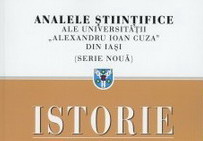Politică şi simboluri în societatea românească (sfârşitul secolului XIX - începutul secolului XX). Statuia lui Alexandru N. Lahovary
Politics and symbols in the Romanian society (the end of the 19th century – the beginning of the 20th century). The statue of Alexandru N. Lahovary
Author(s): Liviu BrătescuSubject(s): History
Published by: Editura Universităţii »Alexandru Ioan Cuza« din Iaşi
Keywords: symbolic level; strategy; statue; homage; patrimony
Summary/Abstract: At the beginning of the 20th century, the political parties were entering in a new phase of their permanent competition. This time, the battle was going to be fought at a symbolic level, each of the two parties trying to enrich their rhetoric by bringing forward the name but also the actions of a leader or another, from a certain moment. The strategy adopted by each party meant that the personality brought back to the public’s attention, through a statue, had to be one accepted as a valuable politician by a broader segment of people interested in politics. The Conservatives made the first move, from the very beginning of the 20th century, because they understood very well the image capital gained by the Liberals after the inauguration of the statues of Michael the Brave and Stephen the Great. They proposed Alexandru N. Lahovary, a man known for his eloquence, diplomacy but also for his oratorical qualities. Because when he died he didn’t have many adversaries, Lahovary had the chance to be appreciated by a greater number of political actors when his former colleagues were to present his entire activity at the unveiling of his statue. By the inauguration of the statue of Alexandru N. Lahovary, on June 17th 1901, the Conservatives had the chance to offer a model of conduct to all the political actors from Romania but also to try to solve the succession issues in the Conservative Party. Who wasn’t going to be present at the unveiling, to bring a last homage to the Conservative leader, couldn’t hope for a chance at the leadership of the party. Thus, the inauguration of the statue of Lahovary became a good opportunity to rediscover solidarities, to confirm the existent affinities and to bring a new contribution to the permanent development of the national patrimony.
Journal: Analele Ştiinţifice ale Universităţii »Alexandru Ioan Cuza« din Iaşi. Istorie
- Issue Year: 2014
- Issue No: 60
- Page Range: 521-550
- Page Count: 30
- Language: Romanian
- Content File-PDF

